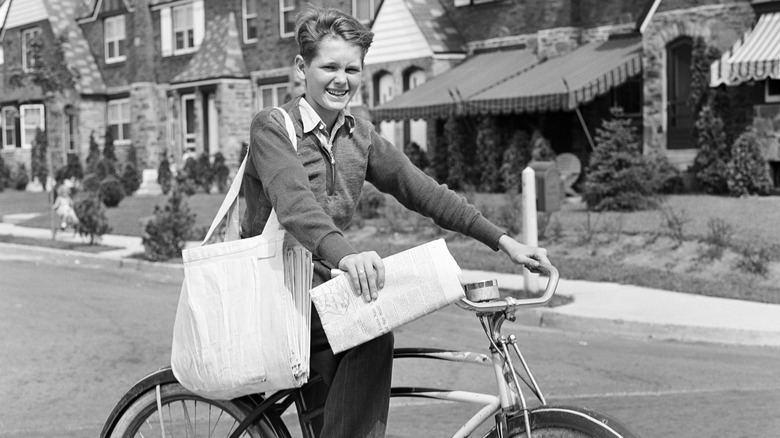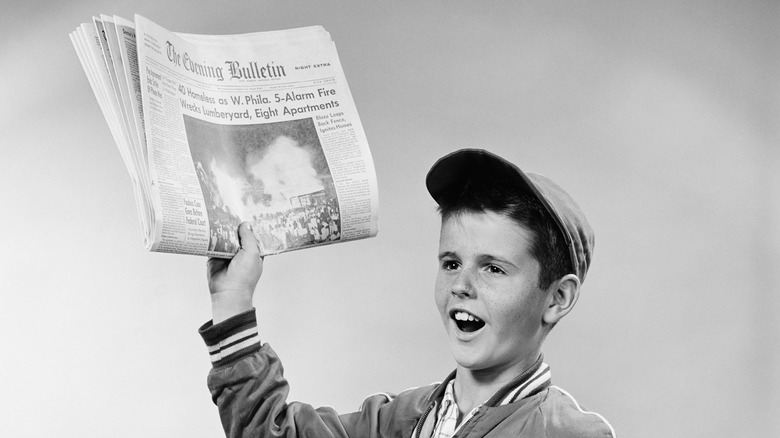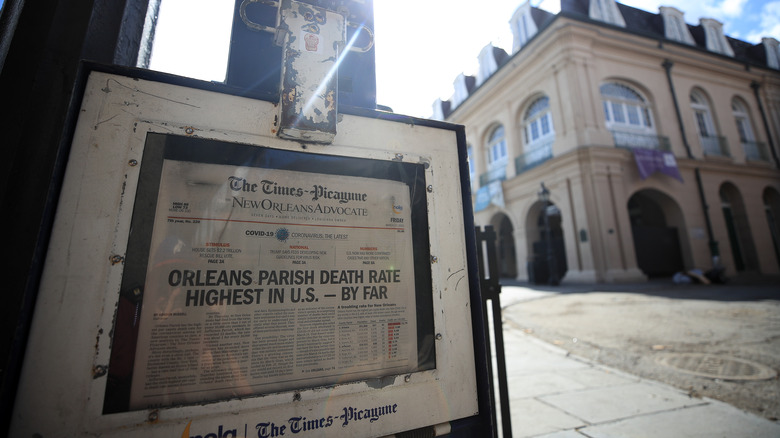Why You Rarely See Paperboys These Days
The United States and other Western countries have largely taken the view that child labor is immoral and criminal and to be avoided. However, for over a century there was one job that was consistently outsourced to children: delivering newspapers. For many, it was their first job. As Molly Snyder writes for On Milwaukee, it was a job that required discipline (waking up before dawn) and a lot of work, as well as certain management skills, that often would come in handy later in the young workers' careers. These days, however, "paperboys" (and yes, girls did the job, too) are all but gone, and it's not particularly hard to point to several reasons why.
Perhaps foremost, print-based media is quickly becoming a thing of the past. There's no need for a preteen to deliver a newspaper to someone at zero-dark thirty when a subscriber can just as easily read the entire publication on a screen. However, wrapped up within the decline of print media are other matters bedeviling the newspaper industry, including the decline of daily papers, according to Smithsonian Magazine, as well as the disappearance of smaller, community newspapers.
The first paperboys
At a certain time in history, it was basically expected that young children would be put to work, just like adults. And lest you think that it was only Dickensian England that leaned into child labor, make no mistake: the U.S. didn't start banning child labor until 1916. Prior to that, an estimated 2 million children worked in mines, mills, and so on.
It's in this backdrop of children — and here "children" means "poorer children" — being put into the labor market that, according to Irish Central, the first paperboy was hired. In 1833, 10-year-old Barney Flaherty was hired to deliver the New York Sun.
Even as society moved away from child labor, newspaper delivery was still outsourced to children for several decades. Why? It was easy to get around child labor laws by simply declaring paperboys as independent contractors, rather than employees, as SCV News reports. That and, as Molly Snyder wrote for On Milwaukee, "I was 14 years old and wanted money to spend at the mall."
The moribund newspaper industry
It may be tempting to point to the emergence of the internet, and the concurrent decline of print media (per United States Census Bureau), as the end of the printed newspaper and, along with it, the paperboy who delivered it. However, while that's true to a point, the story is a bit more nuanced than that.
All the way back in 1991 — well before the internet became ubiquitous — newspapers had been shutting down their afternoon editions, according to the American Journalism Review. Afternoon editions certainly made more sense for children than morning editions (though they delivered both), considering things such as school schedules and all that. Then the newspaper industry started conglomerating and shrinking, bringing with it the death of smaller and more local newspapers (entirely, not just print editions) (per The New York Times). With print editions become rarer and rarer, the number of people required to deliver them has shrunk as well.
There are cultural factors, too. There are ways for children to earn pocket money (via Arrest Your Debt) that don't involve delivering newspapers, and children may be more drawn to those. The world isn't the same place it was in Ozzie and Harriet's day, and sending out preteens into the dark, unaccompanied, is no longer considered best practice when it comes to parenting. Anymore (per Best Life), if you're getting a printed newspaper delivered, it's going to arrive courtesy of an adult behind the wheel of a car.


